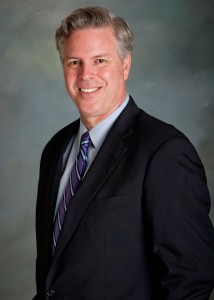

Michael Spagna
California is on the verge of a major teacher shortage, and state leaders need to take steps now if they don’t want to see classroom sizes balloon as education officials scramble to meet the needs of preschool through high school students.
Michael Spagna, dean of California State University, Northridge’s Michael D. Eisner College of Education, said the looming teacher shortage could have severe implications for the future of California’s workforce.
“If we don’t have enough credentialed teachers, then the question is, who will be teaching our kids?” Spagna asked.
He pointed out that over the past decade, the California State University (CSU) system has prepared more of California’s teachers than all other institutions combined, and it accounts for nearly 8 percent of the nation’s teachers.
“But the pipeline of people who want to become teachers is shrinking, especially in California,” he said. “It’s a combination of things, including ongoing negative portrayals of teachers by politicians and others, and a continuing devaluation of the career of a public school teacher. In the past, 98 percent of those who went into teaching did so because they wanted to change the world. That percentage is much lower now.
“At the same time,” Spagna continued, “the cost of living [combined with traditionally low wages] is making it much harder for someone considering becoming a teacher — particularly in areas like Los Angeles and the Bay Area, where the cost of living is astronomical. When you also factor in that over the next three years, up to one-fifth of the state’s teaching force will be retiring, California is facing a tsunami of a disaster when it comes to its teachers in the not-too-distant future.”
He noted that in the academic year 2001-02, the CSU enrolled and credentialed three times as many teacher candidates — 28,656 — than it does currently — only 8,837 in 2014-15.
“This year, school districts project that they will need to hire 21,500 new teachers in California,” he said. “Yet, all the credential programs combined only have about 13,300 candidates, leaving a shortfall of more than 8,000 newly trained teachers.”
Hoping to stave off the pending crisis, Spagna and a team of CSU deans and associate deans of education came up with proposals they hope will deal with the problem. They presented CSU Chancellor Timothy White with a formal white paper outlining their ideas earlier this year.
At the top of their list is removing the obstacles that get in the way of someone who wants to be a teacher, including executive order 1099, in the CSU, which currently prohibits teacher-credential programs from admitting students until they have passed the California Subject Examination for Teachers (CSET).
“We have been eroding the teacher pipeline inadvertently by doing these small paper changes to our programs, such as the CSET requirement,” Spagna said. “In the 2000s, we decided nobody would be admitted in any program unless they passed the subject matter exam. It was well intended, but it hurt us. I don’t see why we can’t admit students who haven’t passed the CSET, but not recommend them for a credential until they pass the CSET. We can soothe the public’s concern that these candidates aren’t going to be teachers until they pass the test, but we also can make it easier for the students to get into a credential program without putting roadblocks in their way.”
Spagna said CSU education programs also can do a better job at fostering and testing alternative models of teacher preparation — from weekend and online courses to co-teaching designs — as well as ensuring that their programs are better aligned and more responsive to the state’s preschool to high school educational priorities.
“We also need to start aggressively promoting teaching as a career,” Spagna said. “If you want to change the world, teaching is a great way to do it. A teacher touches the lives of hundreds of young people, giving them the tools to be successful, contributing members of society. What can be more honorable than educating others? Yet, for some reason, we don’t treat teachers with the respect they deserve.
“It speaks volumes when you look at how they are paid,” he continued. “They are paid nothing at the beginning, hazed during their first two years on the job, forced to pay for supplies for their classrooms out of their own pockets, and then have to hold on for 30 or 40 years before they get good benefits and retirement packages. Do you know what you get after 30 or 40 years with those working conditions? Burned-out teachers.”
Spagna said the state needs to start investing in its public school teachers.
“This is not a waste of money,” he said. “By investing in public education, you are ensuring that California has the educated workforce that employers are looking for and will be looking for in the years to come.”